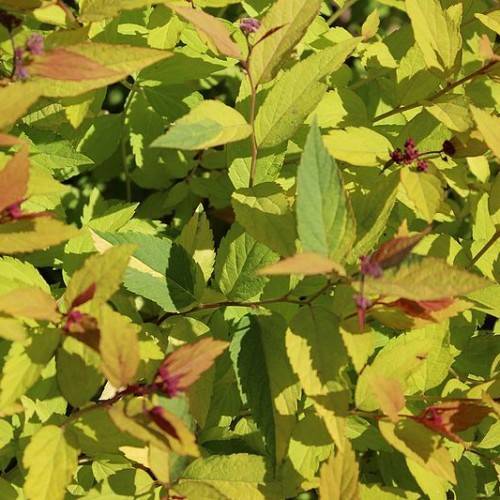
Japanese spirea
Spiraea japonica 'Lisp' GOLDEN PRINCESS
Cycle:
Perennial
Watering:
Average
Hardiness Zone:
3 - 8
Flowers:
Flowers In Spring
Sun:
Full sun, Part sun/part shade
Soil:
Humus rich
Fruits:
Fruits In Summer Ready In
Leaf:
Yes
Growth Rate:
Moderate
Maintenance:
Low
Drought Tolerant:
Yes
Care Level:
Medium
watering
Water Japanese spirea (Spiraea japonica) regularly to keep soil consistently damp. During the summer months, water deeply about twice a week if rainfall is less than an inch. In the winter, water less often, about once a month. Make sure to check the soil regularly and water when the top inch of soil feels dry. Avoid over-watering, as this can cause plant stress or root rot.
sunlight
Japanese spirea (Spiraea japonica 'Lisp' GOLDEN PRINCESS) grows best in sunny locations with at least 4 to 6 hours of direct sunlight per day; this amount of sun exposure is necessary for the plant to achieve optimum flowering and growth. During the summer months, Japanese spirea can do with a bit less full sun, but direct sunlight for at least 3 to 4 hours per day is still necessary to keep the leaves and blooms vibrant. In winter, this shrub can do with less direct sunlight, but some sun is still needed to encourage new growth and prevent leaf discoloration. Place this shrub where it can get full sun in the morning and filtered or partial shade in the afternoon.
pruning
It is recommended to prune Japanese spirea once a year, in late summer, after it has finished blooming. This provides the plants with an opportunity to store up energy and nutrients for the winter and to rebloom for the following season. Pruning can help to keep the plant's size in check and to stimulate production of new flowers. To prune, cut out any dead or damaged wood from the shrub as well as any thin, weak branches. In addition, remove any stems that are overly close together to promote air circulation and prevent overcrowding. Lastly, cut back all older stems back to 1/2 or 1/3 of their previous size in order to encourage new growth.
